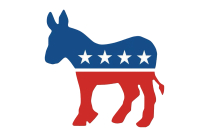Changes on table for TDA grant funding
People seeking funds from the Haywood County Tourism Development Authority spend hours filling out grant applications, and all the tourism agency gets for the applicant’s trouble is paper skyscrapers.
“This program has grown to the point where we now have about 100 to 120 grants to manage. It has become a tremendous amount of paperwork not only for staff but for applicants,” said Lynn Collins, executive director of the TDA, during a meeting with various tourism leaders.
Seeing a need for change, the Haywood County TDA is looking to make its grant funding process easier for all. Specifically, the authority is reevaluating procedures for its 1 percent committee funding (see box).
The current method requires hopeful grantees to jump lots of hoops for what amounts to small amounts of money. Typically, special event promoters or businesses receive $1,000 to $2,000.
They must vie for a sliver of the money pie through their respective 1 percent committees, fill out an application and go through an interview process. Then, each 1 percent committee decides how much, if anything, to award to the various applicants — but that’s not all.
Related Items
Once the 1 percent committee agrees on how to dole out its annual allocations, the TDA’s executive board has to give its final approval. Then, once the money is approved, each grantee must show how the money is spent and that the TDA was given proper credit for its contribution.
“For $2,000, it is more trouble than it’s worth,” Collins said. “You have spent all that money just getting through the process.”
All of the paperwork — applications, print advertising, receipts — at some point moves across Collins’ desk. Collins said neither she nor any of her employees have the time to review every bit of paperwork, and the TDA doesn’t want to pay an additional employee to deal with that alone.
“There is just no way that I personally can police all these things,” Collins said.
Particularly when people call her to complain about a fellow grantee who they claim didn’t follow the funding guidelines or tiffs over advertising funded by the TDA.
“It has gotten really bad lately,” Collins said, adding that it is not her job to make sure every entity putting on an event is given adequate credit in advertising.
The biggest suggested change would allow each of the five 1 percent committees to create a cohesive marketing and spending plan for its annual funding allotment. The committee would approve one funding application, rather than a bunch of individual applications. The executive board would give approval for one total plan.
Representatives from Maggie Valley were excited about the possibility.
“I like that. I like that a lot,” said Tammy Wight, member of the Maggie Valley 1 percent committee. “We are advertising these associations, but what we should be marketing is Maggie Valley,” she later added.
While Maggie’s 1 percent committee would have more than $100,000 to work with, a smaller zip code like the Clyde 1 percent committee, which only has about $600 at its fingertips, would not have the resources to craft a big plan. However, the Clyde committee could still choose to focus what little money it has on one project to benefit the whole zip code it covers, Collins said.
“They are spending the money the way they want to spend their money, and they are still included in the funding you are doing on a countywide basis,” Collins said.
No matter what, the TDA will not do away with applications completely.
“There has to be a paper trail,” Collins said.
The TDA is, however, eliminating grantees’ ability to reallocate or carryover funding this fiscal year because some people apply for money knowing that they will likely ask to use the funding for something other than what it was originally allocated for.
Some complained that the grant application process was long and redundant, and the guidelines that go along with receiving the funding can also lead to confusion among applicants.
“Either the guidelines are not clear, or they are too cumbersome to deal with, or people take poetic license with what they think will pass the guidelines,” said Ken Stahl, chair of the TDA’s finance committee.
A couple opinion leaders said they felt the TDA’s system was a cakewalk compared to state or federal applications they have had to deal with.
“I find that it’s almost been pleasurable to do,” Karen Babcock, executive director of Folkmoot USA, a nonprofit that funds the county’s annual international festival.
One thing the group hasn’t figured out how to improve is the follow-up reports that are supposed to illustrate how the grantee used the TDA funding to attract tourists and put heads in beds. There is nothing concrete in the reports; they mostly depend on how well a person can paint a verbal picture.
“It is based on how well that person can BS. There is nothing qualitative there. We don’t demand that you prove room nights,” Collins said.
Although particular ideas were not tossed out, most agreed that the TDA should start requiring some form of tangible proof that its investment has made a difference.
“You need to put the onus on people to at least try to come up with something,” Babcock said.
What is the 1 percent committee?
Overnight guests in Haywood County pay a 4 percent lodging tax, which is tacked onto their hotel bills. The tax revenue is then given to the county Tourism Development Authority to spend to market the area to tourists.
Three-fourths of the revenue is placed in a large fund focused on advertising Haywood County as a whole to potential visitors. The remaining tax money is given to one of five committees, depending on which Haywood County zip code it was collected in. For example, a portion of the lodging tax collected at the Lambuth Inn at Lake Junaluska is handed over to a committee that represents tourism-related businesses in the 28745 zip code.
The TDA has five such committees — one for each zip code in the county. The individual committees, also known as 1 percent committees, may spend the money they receive on tourism-related events or projects within their zip code. The amount of funding each committee receives depends on how much lodging tax revenue is collected within its zip code.
The committees whose zip codes include Maggie Valley and Waynesville get the most money because they have a large number of accommodations and bring in the highest amounts of lodging tax money.









